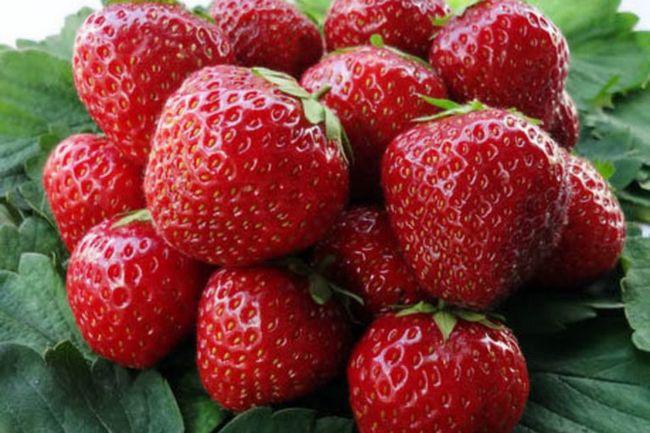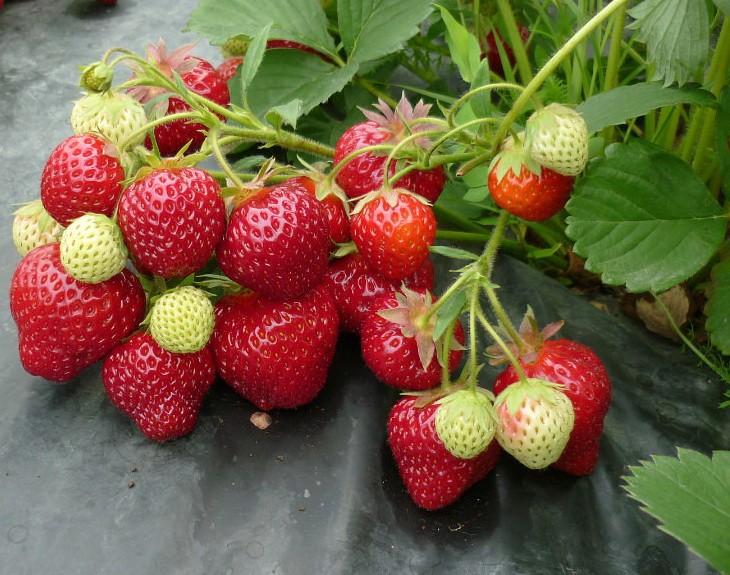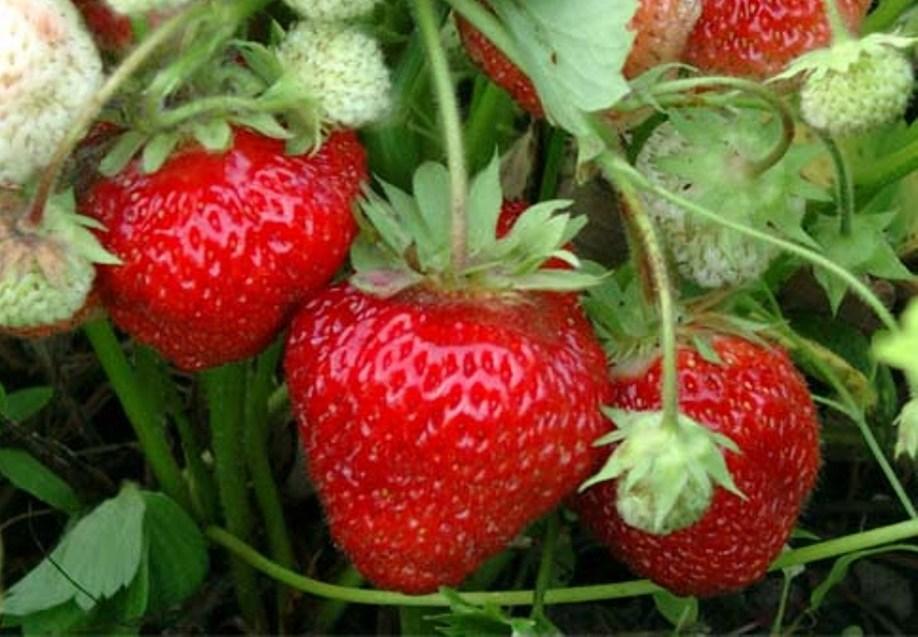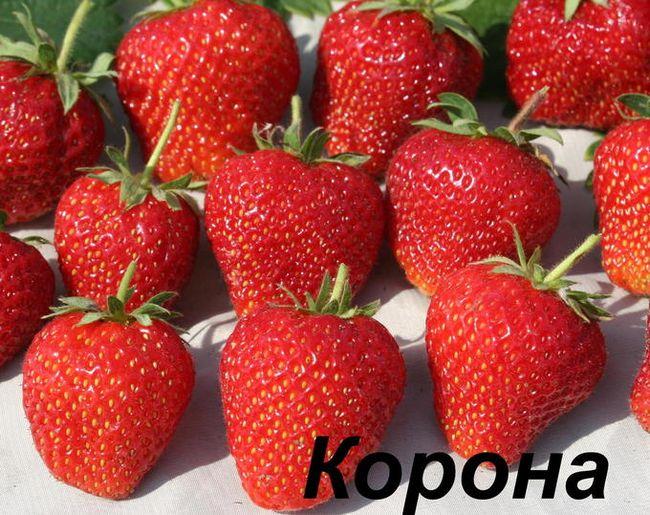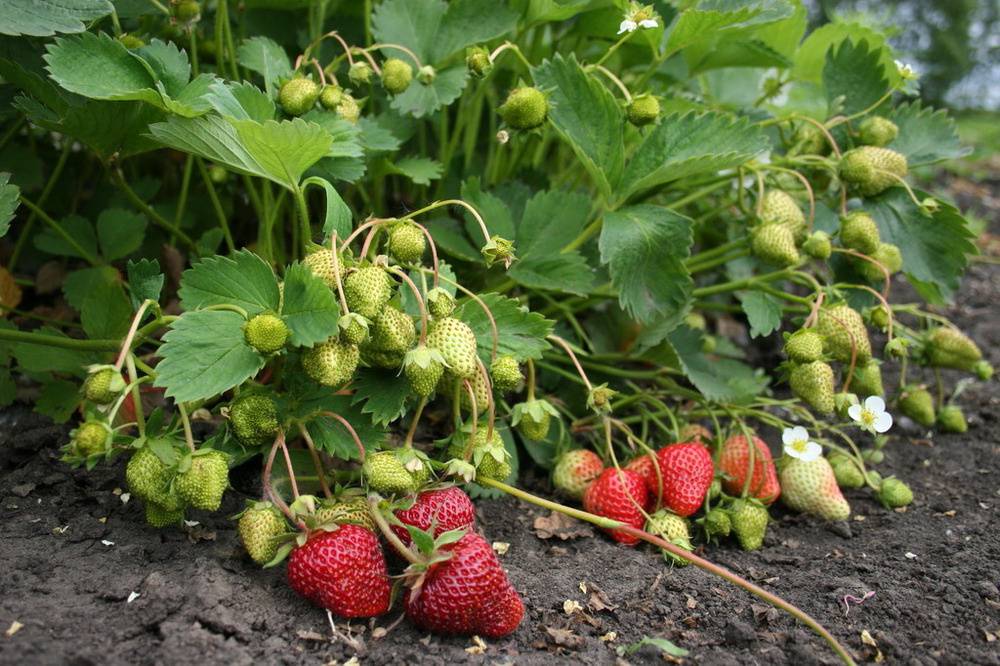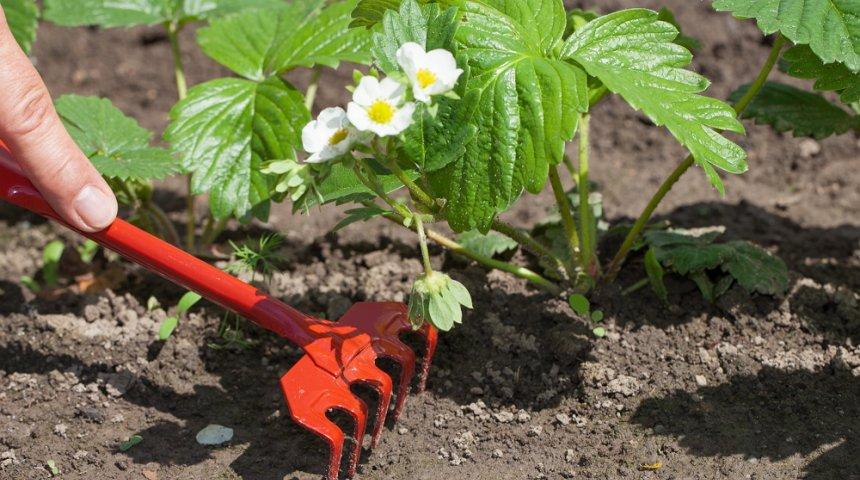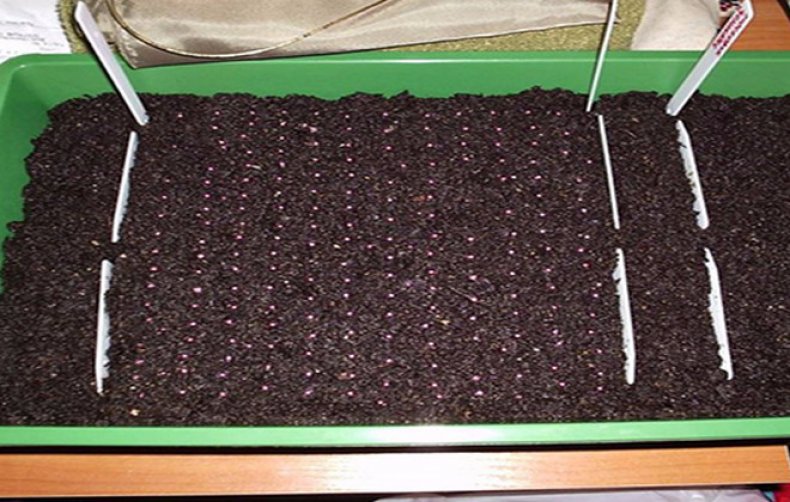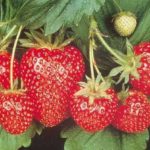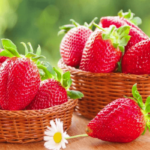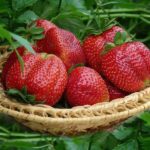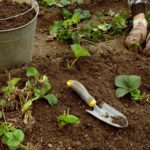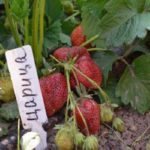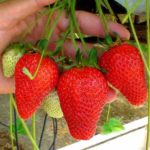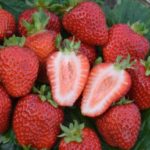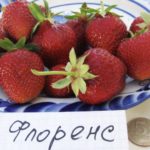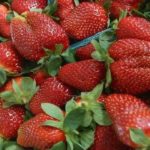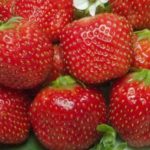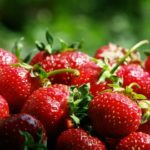Remontant varieties of berry crops have gained popularity due to their positive qualities. Everyone wants to enjoy delicious Corona strawberries all summer long. Despite the fact that the variety was bred by Dutch breeders, it takes root well in the middle zone and produces high yields of berries.
- Description and characteristics of the Crown
- History of selection
- Region of growth
- Bushes
- Flowers and berries
- Strawberry yield
- Transportability
- Advantages and disadvantages of the variety
- How to grow strawberries correctly
- Preparation of planting material
- Landing dates
- Preparing the beds
- Planting strawberries
- Rules for caring for strawberries
- Necessary feeding
- Watering
- Preparing for winter
- Methods of controlling diseases and pests
- Reproduction methods
- Seeds
- Usami
- Dividing the bush
- Features of Corona fruiting
Description and characteristics of the Crown
Strawberries are bushes with large concave leaves. Fruits will ripen on powerful peduncles. In this case, the stems do not fall down under their weight. The peculiarities of the culture are not only its decorative appearance, but also its ease of care.
History of selection
A hybrid appeared in the 70s of the 20th century. Dutch breeders worked on its breeding. By crossing the strawberry varieties Tamella and Induka, we got a wonderful plant. From its parents it received better taste and resistance to weather disasters.
Region of growth
The resulting strawberry variety is zoned for areas with temperate climates. The bushes can withstand frosts below 20 degrees.
You can grow it in the south. There the bushes will bear fruit throughout the growing season. Hence the popularity of remontant strawberries among gardeners.
Bushes
The bushes of the perennial plant reach a height of 20-25 centimeters. The strawberry root system is a perennial rhizome in the form of a modified stem with skeletal roots and small roots that penetrate the ground to a depth of 20 centimeters. The roots extend 10-20 centimeters away from the mother bush.
Short lateral stems are formed on the short main stem. They branch to form a bush shape. The trifoliate large leaves of the Crown are colored green. During the summer they change up to 2 times.
Flowers and berries
At the top of the shoot there are buds that produce flower stalks. Clusters of flowers and fruits are formed from the apical bud. The more upper buds the Corona strawberry has, the higher the berry yield.
The white petals of the flowers fall off, and berries with seeds form in their place. They are distinguished by:
- dark red color;
- oval-conical shape;
- weight up to 25-30 grams;
- juicy pulp with a balanced content of sugar and acid;
- strawberry aroma;
- smooth, shiny surface.
From the buds in the lower part of the bush, tendrils are formed, which are necessary for the propagation of garden plants.
Strawberry yield
Gardeners choose Corona because during the summer they can collect up to a kilogram of tasty, large berries from 1 plant. The variety is also grown on an industrial scale. From 1 hectare of field, farmers collect about 12-14 tons of fruit.
Transportability
The juicy pulp of the fruit is so tender that it simply melts in your mouth. But transporting such berries is difficult. On the way, it will crumple and release juice. Therefore, it is necessary to collect unripe fruits in order to bring them to the market.
Advantages and disadvantages of the variety
More than 40 years have passed since the Corona strawberry appeared. But gardeners continue to give preference to the remontant species. And all this thanks to the fact that the hybrid:
- ripens early;
- produces consistently high yields;
- grows successfully in any region;
- resistant to low temperatures.
Among the disadvantages is that strawberries are only suitable for fresh consumption. You cannot make jams or preserves from it. It quickly loses its shape and spreads out. Therefore, it is difficult to transport berries over long distances. The culture is also susceptible to fungal infections.
How to grow strawberries correctly
To enjoy delicious strawberries, you need to prepare a plot for the berry crop. Follow the terms and rules for planting plants in open ground.
Preparation of planting material
To start a strawberry plantation, use seedlings that have:
- fibrous root system 5 centimeters long;
- 3-4 leaves;
- healthy central kidney.
If the roots are long, then they are shortened to 5-7 centimeters.
Landing dates
The best time to plant Corona strawberries is in early to mid-May, depending on the region. Planting can be carried out in August, until mid-September. Seedlings planted in the morning or evening, in cloudy weather, take root well.
Preparing the beds
The place for the crop is chosen with fertile, weed-free soils. It is better if it is loamy black soil. Slopes in dry areas are suitable for planting: northwestern, northern, northeastern.
If you plan to plant in the spring, then you need to dig up the area in the fall to a depth of 27-30 centimeters. Before planting, cultivate an area 15-18 centimeters deep.
Be sure to add up to half a bucket of rotted manure per square meter of plantation before digging. A mixture of 2-3 kilograms of humus and 30-50 grams of superphosphate is also suitable. Use for planting strawberries between rows of currants or fruit trees.
Planting strawberries
The strawberry yield depends on the distance between the bushes. It is necessary to plant bushes with an interval of 30-40 centimeters. And between the rows they leave 80-90 centimeters. The holes are dug by hand, placing seedlings there to a depth of 10 centimeters. The roots should not bend, and the central bud should be at ground level. Holding the seedling with one hand, sprinkle the soil with the other to the level of the heart. All that remains is to slightly compact the soil and water the strawberries, spending 0.5-1 liter of water on the plant.
It is necessary to shade the plantation for 3-4 days with straw, dry grass, and pine needles. Mulch also between rows with a layer of 6-8 centimeters. 2 days after planting, check the position of the central bud. If it is filled up, then they rake out the earth.
Rules for caring for strawberries
You need to care for the Korona variety in the same way as other types of remontant strawberries. Although the culture is moisture-loving, it does not tolerate stagnation of water. The demands of plants for food are high, but an excess of nitrogenous substances in the soil leads to strong vegetative growth to the detriment of fruiting.
Necessary feeding
Fertilizers are applied according to the following scheme:
- The first time in the spring you need 10 grams of ammonium nitrate and 15 grams of superphosphate per 1 square meter of planting. You can embed dry fertilizers into the ground with a hoe or shovel; liquid fertilizers are prepared by diluting them in a bucket of water.
- Before the flowers appear, water the bushes with a solution of mullein at a concentration of 1:6 or bird droppings at a concentration of 1:20.
- Replace organic matter with mineral mixtures of 10 grams of ammonium nitrate and potassium salt per square meter.
- After picking the berries, you need to feed them with an aqueous solution of 20 grams of superphosphate and 8 grams of ammonium nitrate and potassium salt. Fertilizers promote the formation of flower buds.
- In the fall, poor soils need to be fed with potassium-phosphorus fertilizers. They are applied dry in the inter-row spaces.
- In the 3rd year of plantation life, an additional 2 kilograms of humus per square meter is added, planted to a depth of 10-25 centimeters.
Fertilizing is combined with loosening the soil, which is carried out 4-5 times per season.
Watering
In the first year after planting, it is necessary to moisten the Korona strawberry plantings 4 to 6 times during the summer. 2-3 buckets of water are poured per square meter of plantation. After watering, the soil should be loosened. Snow retention, which is arranged using currant curtains or shields, helps moisturize the area.
Then you need to water the plants more abundantly: 1-2 times before flowering, up to 3 times during the ripening period of the berries and after harvesting. On sandy soils, the frequency of watering increases.In order for the soil to be well saturated with moisture, you will need 3-4 buckets of water per square meter.
Preparing for winter
Covering strawberries is a must in areas with cold winters. To do this, in November, when the soil is frozen, the bushes are completely covered with brushwood, straw, spruce branches, and dry tops of potatoes or tomatoes. The coating layer should be 8-10 centimeters. In the spring it is removed and used to mulch the beds.
Methods of controlling diseases and pests
Fungal infections most often affect strawberries. They appear as spots on the leaves. They fight spotting by spraying with a 1% solution of Bordeaux mixture. Treatment is needed 2-3 times during the growing season. The first time the procedure is carried out when the buds are exposed. Then it is repeated every 3 weeks.
Among the pests that attack strawberries are spider mites, aphids, and weevils. You need to fight parasites with insecticides. Among the popular ones, tobacco decoction and onion peel infusion are used.
Reproduction methods
Like all berry crops, strawberries are propagated in different ways. The most difficult one is with seeds. Many gardeners use the vegetative method.
Seeds
Crown is grown from seeds through seedlings. The seeds are so small that they are laid on the surface of the nutrient soil, sprinkled lightly with earth. Then the plantings are pressed with glass. By regularly airing and watering, wait for sprouts to appear. As soon as they come out, expose the containers to the sun. After the first true leaf, the seedlings dive. And with 3-4 true leaves, strawberries can be planted in open ground.
Usami
It is easier to propagate the crop vegetatively. Mustaches come from healthy and strong bushes. As soon as rosettes of leaves form on them, they are pressed into the soil. Then water it.After the rosettes have rooted, the seedling is separated from the mother bush. You can transplant young bushes to a new place.
Dividing the bush
Two-year-old strawberries are dug up and the bush is divided so that each part is a rosette of leaves. In addition, each part must have fibrous roots. Having cleared them of damage, the bushes are planted in a permanent place.
Features of Corona fruiting
Strawberries of the Korona variety are valued for their excellent taste. It is difficult to preserve these juicy fruits. Therefore, they are collected early in the morning in a container with holes. This will allow excess juice to flow out without stagnating in the cup.
The peculiarity of the fruiting of the hybrid is that the berries become smaller every year. Therefore, it is necessary to renew the strawberry plantation every 4-5 years.

